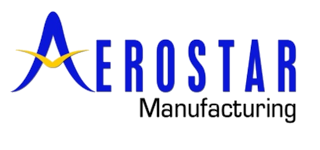Recently, these columns have focused on factors that contribute to the productivity of G-code programs, such as consistency, compatibility, ease of use and safety. Improving programs in these areas usually results in better machining efficiency. That is, when making programs more consistent and compatible, easier to use and safer to run, the machines — and the people running them — can naturally be more productive.
When it comes to efficiency, however, one must be careful. When doing something that improves efficiency, the machining may become more difficult and, in turn, more dangerous. By increasing the proficiency of the people running the machine, this may be an acceptable outcome. Having greater proficiency will allow CNC users to safely perform more complicated tasks.
That said, I will concentrate here on G-code programming techniques that improve efficiency and do not — for the most part — sacrifice usability or safety. There are, of course, countless improvements that one can make to processing, fixturing and cutting tools that will help reduce program execution time. But here we concentrate on techniques that are free, requiring only restructuring a program to execute more quickly.
As with all my columns about productivity, my intention is to inspire readers to consider their own CNC environment and look for ways it can be optimized. Use my suggestions to get started.
The Shortest Distance
When possible (and safe), ensure that as many axes are moving together during non-cutting commands. This includes approach, retract and motions as tools move from one machined surface to another. When approaching during machining center programs, however, if the operators are accustomed to seeing X/Y axis movements first, then the Z axis movement, they may be nervous about seeing all axes moving together within 0.1 inch (2.5 mm) of the work surface. If so, bring the tool 1.0 inch (25.0 mm) above the work surface in the Z axis first, then rapid the rest of the way in Z axis.
Internalize M Codes
Be sure to include M codes with motion commands whenever feasible. This includes spindle on and off and coolant on and off. This way, the M code’s activation time will be internal to the time it takes to make the motion (or vise versa). This is especially important with machines that allow only one M code per command. For these machines, it is impossible to start or stop the coolant and spindle at the same time unless the machine builder provides additional M codes for this purpose.
Efficiently Program Automatic Tool Changers
While this may be common knowledge, here are a few reminders:
- Include an M19 in the tool’s movement to the tool change position. This will align the key in the tool change arm with the keyway in the tool holder during the motion.
- For double-arm tool changers, always get the next tool ready (specify the T code for the next tool) soon after making a tool change.
- For short machining cycles, be sure tools are loaded consecutively in the tool changer magazine.
Read more: 5 G-Code Tips for Increasing CNC Efficiency
